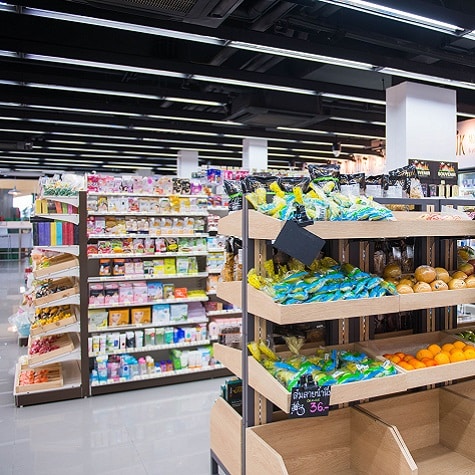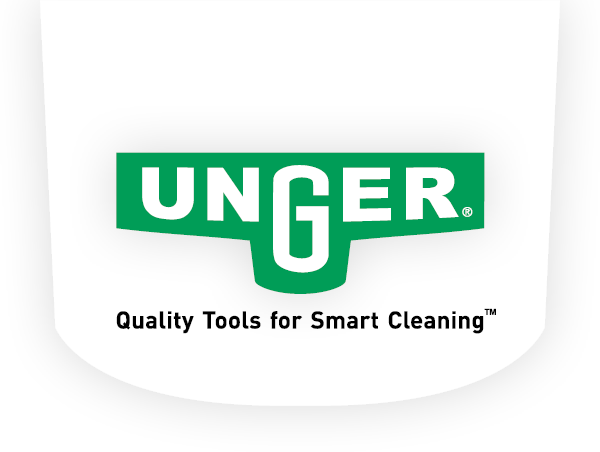NEW! Powerful Nano Filtration with Unger's HydroPower® Nano See The Product

Keeping Your High Traffic Convenience Stores Up to Cleaning Standards
Convenience stores are everywhere and can be found in almost every neighborhood, making it a saturated market with intense competition. With easy access a cornerstone of the market, consumers often have multiple options to choose from nearby.
Adding to the competitiveness, as c-stores elevate their food service programs to offer more ready-to-eat meals and fresh produce, they are attracting a broader customer base. While this expansion increases revenue opportunities, it also increases competition with grocers and other types of retailers.
As these stores vie for customers in the same geographic areas, they can achieve a competitive advantage by focusing on differentiation, whether through product selection, pricing strategies, customer service or store cleanliness.
When it comes to store cleanliness, those that do it well can attest that cleanliness attracts both customers and qualified employees. However, overcoming cleaning challenges within the c-store environment requires not only keen attention to detail, but also having the right commercial cleaning tools and equipment for the job.
The Big Wins Resulting from Effective Cleaning Practices
Convenience stores are subject to health and safety regulations that include cleanliness standards. By maintaining a clean store, owners can ensure compliance with these regulations, avoiding penalties, fines, or even closure of the establishment. Looking at the bigger picture, a clean and healthy retail environment also significantly benefits the store by:
- Increasing Brand Reputation & Customer Satisfaction
Cleanliness plays a large part in shaping a brand and customers’ purchasing decisions. A clean and well-maintained store creates a positive impression that the store is committed to supporting the highest level of hygiene and customer experience. A clean store is more inviting, and customers are more likely to feel comfortable, satisfied, and willing to return. In turn, satisfied customers share positive word-of-mouth experiences which can help attract additional business. - Promoting Food Safety
Many convenience stores offer freshly prepared foods and pre-packaged snacks, beverages, and meals. For these stores, proper cleaning and sanitation practices are critical to prevent foodborne illnesses and ensure the safety of the products for sale. Cleaning and disinfecting help preventthe freshness and quality of perishable items. - Protecting Health and Safety
Regular cleaning and disinfection of surfaces, equipment, and restrooms help prevent the spread of germs, bacteria, and viruses between employees and patrons. This process is particularly important during times of heightened public health concerns, such as flu and cold seasons, as we saw with the COVID-19 pandemic.
Additionally, store cleanliness can influence employee satisfaction and reduce the occurrence of, and costs associated with, slip-and-fall accidents caused by an unclean or cluttered environment.
The Big Wins Come with Some Unique Pain Points of Convenience Store Cleaning
On average, a convenience store selling gas has around 1,100 customers per day, or more than 400,000 per year. This amount of volume means that achieving consistently clean stores is challenging when dealing with nonstop foot traffic and weather conditions that vary from location to location.
With continual foot traffic comes a flow of dirt, debris and moisture through the entrance. As such, any cleaning task required is not simply a one-and-done task. Usually, the same task – clearing entryways, wiping down counters, cleaning restrooms, etc. – needs to be repeated throughout the day due to patterns of increased traffic.
Not only is the frequency of cleaning around patrons a logistical challenge, but the frequency needed also poses a safety hazard to both employees and patrons. When floors are left wet, whether from snow melting off shoes or spills at a self-serve counter, slip and fall accidents are more likely. Slip and fall accidents represent approximately 39 percent of workers’ compensation claims submitted by convenience store employees, with the average cost of a slip, trip or fall accident being more than $10,000.
Convenience store operators have a legal obligation (a duty of care) to avoid causing harm to others, which includes doing everything reasonably possible to make sure occupants are safe from dangerous conditions, making the commitment to frequent cleaning a must.
Compact Cleaning Carts and Turnkey Tools Built for C-Stores
To manage their duty of care initiatives and local traffic scenarios, c-stores need commercial cleaning equipment designed with their unique environments and challenges in mind. To determine the best tools to support these initiatives, you’ll want to consider if the tools’ design and features support the following:
Quick & Efficient Spot Cleaning
Spot cleaning in a convenience store typically involves addressing specific areas or surfaces that require immediate attention due to spills, messes, or other cleanliness issues. While the specific areas can vary depending on the layout and offerings of the store, commonly, checkout counters and self-serve food & beverage areas require regular cleaning to remove any spills, stains, or residue left by customers, such as from coffee, soda or condiments.
From Unger’s experience with our convenience store customers, they estimate that a patron spills something on the floor roughly once an hour. For those situations, a cleaning tool like Unger’s Excella Microfiber Flat Mop is the superior tool for the job. A quick changing bottle supports efficient and faster cleanup of spills, while eliminating the need to break out a cleaning bucket.
For larger floor cleanup or end of the day floor cleaning, Unger’s OmniClean Dual Bucket System cleans more than 90% of the dirt from the floor, using less water to clean than a traditional floor mopping system. Using less water means floors dry faster, which is also ideal for limiting the risk of slip and fall events. A dual mop system allows you to remove more germs in less time, speeding up your cleaning or closing time.
Minimization of Cross Contamination
In the convenience store environment, germs easily spread from high-touch surfaces such as gas pump handles, restroom facilities, door fixtures and other surfaces into food service areas. For these stores, they need separate cleaning tools for each area. For example, they cannot use the same microfiber cleaning cloth for grease removal in the kitchen that is used for restroom cleaning.
Cleaning tools that offer an intuitive visual color coding system make it easy to separate tools into their correct areas of use or cleaning task. Color coding reduces the risk of accidents arising from the misuse of cleaning equipment and bacterial cross-contamination between areas. Commercial cleaning products that can assist staff tasked with preventing cross-contamination include cleaning brushes, cleaning buckets, microfiber cloths, microfiber mops, floor squeegees and restroom cleaning supplies.
Easy Storage in Limited Space
Given the footprint of an average convenience store, the storage space for cleaning tools is usually limited. When sourcing janitorial cleaning supplies, having the right compact tools that make the biggest impact is crucial. Source tools that are durable and mobile, such as compact carts with storage bins and flat mops with bottles attached. Turnkey tools will make storage not just easy but a time-saver during the cleaning process.
Better, Safer and Faster Convenience Store Cleaning
Unger’s durable and high-quality cleaning tools are built with convenience store needs in mind. From compact tools to turnkey cleaning kits, Unger can support the nuances of Convenience Store cleaning to help you deliver a better, safer, and cleaner user experience.
Learn more and request to try Unger’s innovative tools for convenience store cleaning first hand at your facility.
